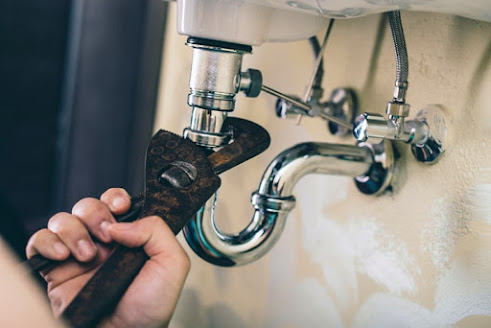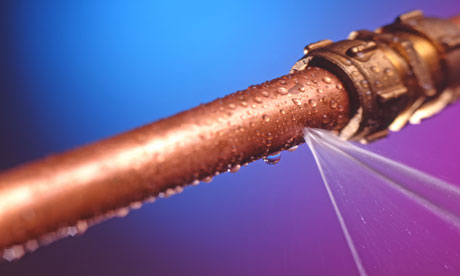What're your ideas regarding Why Do My Pipes Make Noises?

To detect noisy plumbing, it is very important to establish initial whether the unwanted noises take place on the system's inlet side-in other words, when water is transformed on-or on the drainpipe side. Sounds on the inlet side have varied causes: too much water stress, worn valve and also faucet parts, poorly attached pumps or various other appliances, incorrectly put pipeline fasteners, and plumbing runs consisting of way too many limited bends or various other restrictions. Noises on the drainpipe side generally stem from inadequate location or, just like some inlet side sound, a format consisting of tight bends.
Hissing
Hissing sound that takes place when a tap is opened slightly generally signals extreme water stress. Consult your neighborhood public utility if you believe this trouble; it will be able to tell you the water pressure in your area as well as can set up a pressurereducing shutoff on the inbound water pipeline if essential.
Various Other Inlet Side Noises
Squeaking, squealing, damaging, breaking, as well as touching generally are brought on by the development or tightening of pipelines, usually copper ones supplying warm water. The audios happen as the pipes slide against loose fasteners or strike nearby house framing. You can usually identify the place of the issue if the pipes are subjected; just follow the audio when the pipes are making sounds. Probably you will discover a loosened pipeline wall mount or an area where pipes lie so close to flooring joists or other mounting items that they clatter versus them. Connecting foam pipe insulation around the pipes at the point of contact must fix the problem. Be sure bands as well as hangers are protected and supply adequate assistance. Where possible, pipe bolts must be connected to massive architectural aspects such as structure wall surfaces rather than to mounting; doing so reduces the transmission of vibrations from plumbing to surface areas that can enhance and also transfer them. If affixing fasteners to framework is inevitable, wrap pipelines with insulation or other resilient product where they get in touch with bolts, as well as sandwich the ends of brand-new fasteners in between rubber washers when mounting them.
Remedying plumbing runs that struggle with flow-restricting limited or numerous bends is a last resort that needs to be carried out just after consulting a knowledgeable plumbing specialist. Unfortunately, this situation is rather common in older residences that may not have actually been built with indoor plumbing or that have actually seen a number of remodels, specifically by amateurs.
Babbling or Shrilling
Intense chattering or shrilling that happens when a shutoff or faucet is activated, and that normally goes away when the fitting is opened completely, signals loosened or defective interior components. The service is to change the shutoff or faucet with a new one.
Pumps and also appliances such as washing makers and dishwashing machines can move electric motor noise to pipes if they are incorrectly attached. Link such products to plumbing with plastic or rubber hoses-never rigid pipe-to isolate them.
Drainpipe Sound
On the drainpipe side of plumbing, the chief goals are to get rid of surface areas that can be struck by falling or rushing water as well as to insulate pipes to consist of inescapable sounds.
In new building, tubs, shower stalls, bathrooms, and also wallmounted sinks and also basins ought to be set on or against durable underlayments to minimize the transmission of audio via them. Water-saving toilets and faucets are less noisy than traditional designs; install them rather than older types even if codes in your area still permit using older fixtures.
Drains that do not run up and down to the cellar or that branch into horizontal pipe runs sustained at flooring joists or other framing existing particularly problematic noise problems. Such pipes are large enough to emit considerable vibration; they also bring considerable amounts of water, which makes the situation worse. In new building and construction, define cast-iron dirt pipes (the large pipelines that drain pipes toilets) if you can manage them. Their enormity includes much of the noise made by water passing through them. Likewise, stay clear of directing drainpipes in walls shown to bed rooms and rooms where individuals collect. Walls including drains ought to be soundproofed as was defined earlier, using dual panels of sound-insulating fiber board and wallboard. Pipelines themselves can be covered with special fiberglass insulation made for the objective; such pipelines have an impervious plastic skin (often including lead). Results are not constantly satisfactory.
Thudding
Thudding sound, typically accompanied by shuddering pipelines, when a tap or home appliance valve is switched off is a condition called water hammer. The noise and also vibration are caused by the resounding wave of pressure in the water, which suddenly has no area to go. In some cases opening a shutoff that discharges water promptly into an area of piping including a constraint, elbow, or tee installation can produce the very same condition.
Water hammer can generally be treated by installing installations called air chambers or shock absorbers in the plumbing to which the problem shutoffs or faucets are linked. These devices enable the shock wave created by the halted flow of water to dissipate airborne they include, which (unlike water) is compressible.
Older plumbing systems might have short upright sections of capped pipeline behind walls on faucet competes the same objective; these can eventually full of water, lowering or ruining their efficiency. The treatment is to drain the water supply entirely by turning off the primary water valve as well as opening up all faucets. After that open up the main supply valve and also shut the faucets one by one, beginning with the tap nearest the shutoff and also ending with the one farthest away.
WHY IS MY PLUMBING MAKING SO MUCH NOISE?
This noise indeed sounds like someone is banging a hammer against your pipes! It happens when a faucet is opened, allowed to run for a bit, then quickly shut — causing the rushing water to slam against the shut-off valve.
To remedy this, you’ll need to check and refill your air chamber. Air chambers are filled with — you guessed it — air and help absorb the shock of moving water (that comes to a sudden stop). Over time, these chambers can fill with water, making them less effective.
You’ll want to turn off your home’s water supply, then open ALL faucets (from the bathroom sink to outdoor hose bib) to drain your pipes. Then, turn the water back on and hopefully the noise stops! If you’re still hearing the sound, give us a call to examine further.
Whistles
Whistling sounds can be frustrating, as sometimes the source isn’t easily identified. However, if you can pinpoint which faucet or valve that may be the cause, you’ll likely encounter a worn gasket or washer — an easy fix if you replace the worn parts!Whistling sounds from elsewhere can mean a number of things — from high water pressure to mineral deposits. Your best plan of attack here is to give our plumbing experts a call. We’ll be able to determine where the noise is coming from and what the cause may be, then recommend an effective fix!
Cracks or Ticks
Cracking or ticking typically comes from hot water going through cold, copper pipes. This causes the copper to expand resulting in a cracking or ticking sound. Once the pipes stop expanding, the noise should stop as well.
Pro tip: you may want to lower the temperature of your water heater to see if that helps lessen the sound, or wrapping the pipe in insulation can also help muffle the noise.
Bangs
Bangs typically come from water pressure that’s too high. To test for high water pressure, get a pressure gauge and attach it to your faucet. Water pressure should be no higher than 80 psi (pounds per square inch) and also no lower than 40 psi. If you find a number greater than 80 psi, then you’ve found your problem!
Next step is to give us a call in order to install a pressure regulator. Trust us, you don’t want to wait to resolve this issue. Not only is the sound annoying, but high water pressure can be destructive to your home — including damaging certain appliances, like your washer and dishwasher.
Dripping
You might be accustom to the slow quiet drip your kitchen faucet makes. You might have even tuned out your bathroom sink dripping and drabbing all day long — but it’s time to find its cause.
A slow drip could signify a variety of easy to fix issues, such as a worn out O ring, or loose part. And by ignoring the drip, you could be wasting up to 2,000 gallons of water a year! So start conserving water — get it looked at ASAP.
https://www.pwessig.com/blog/2018/december/why-is-my-plumbing-making-so-much-noise-/

We had been introduced to that article about Why is My Home Making Strange Plumbing Noises through an associate on another web blog. You should set aside a second to distribute this blog post if you liked it. I am grateful for your time. Come back soon.
Request Free Estimate